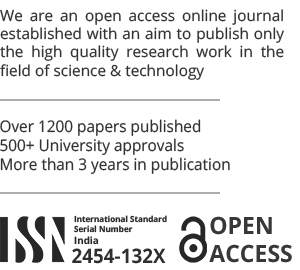Technical Notes
Alcohol detection system for bike using Arduino and RF
On a survey that has been done recently, said that nearly 70% of road accidents occur due to Drunk & drive, with a range of 44% to 67% in small cities. The government has made rules that rider should compulsory wear the helmet and not consume alcohol while drving. Still the riders do not obey the rules even though huge number of fines have been imposed. Not wearing the helmet causes the rider with severe injuries which may lead to death of the rider. In order to overcome this,Smart helmet and detection of alcohol present in rider’s breath is proposed. This paper attempts to explore the possibility of using the technology that would detect the level of alcohol in the blood and prevent “very-start” of the motor vehicle. The model device focused at preventing the user from driving when drunk and reduces the number of accidents occurring due to drunken driving. The model is created using Arduino Uno and Alcohol detecting sensor. The alcohol detecting sensor (MQ-3) when connected to an Arduino UNO R3 detects the level of alcohol content in blood by analyzing driver’s breath. A user friendly device that uses a non-contact breath sensor to detect breath-based alcohol. The device’s sensor sens saturated water vapor in human breath, and three semiconductor gas sensors detect ethanol, acetaldehyde, and hydrogen. The device can check whether the gas introduced into it is human breath and the alcohol level at the same time.
Published by: Meet Jitendra Raut, Sugam Mahesh Chaudhari, Aditya Anil Raut, Reshma Chaudhari
Author: Meet Jitendra Raut
Paper ID: V6I3-1562
Paper Status: published
Published: June 20, 2020
Full Details

